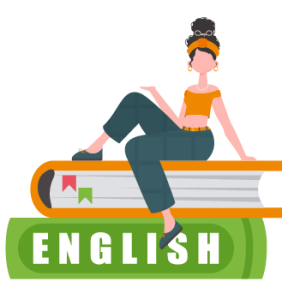
How Effective is an English To Baltimore Translator
13 Jul How Effective is an English To Baltimore Translator
Are you looking to communicate effectively in Baltimore, but finding the local dialect challenging to understand? An English To Baltimore translator may be the solution you need. In this blog post, we will explore the effectiveness of using a translator to navigate the complexities of Baltimorese, the unique dialect spoken in the city of Baltimore, Maryland.
Navigating the Complexities of Baltimorese Translation
Delving into the world of Baltimorese translation presents a unique set of challenges and rewards. This distinctive dialect, with its deep roots in Baltimore’s history and culture, boasts idiosyncrasies in pronunciation, lexicon, and syntax that set it apart from standard American English. For those attempting to bridge the linguistic divide, the key lies in understanding the subtleties that define Baltimorese. Pronunciation is perhaps the most noticeable feature, with words often sounding entirely different from their English counterparts. This can lead to confusion for the uninitiated, where even basic communication attempts might stumble without proper guidance.
Moreover, the dialect is rich in slang and expressions that are indigenous to the city, reflecting its socio-cultural nuances. These colloquialisms can prove to be a minefield for translators, as many phrases carry contextual meanings and connotations that are not immediately apparent. It’s not just about translating words but also about conveying the essence of what’s being said in a way that resonates with the local ethos.
To navigate these complexities effectively, it’s crucial to immerse oneself in the culture and everyday language of Baltimore’s residents. This might involve engaging with local media, participating in community events, or simply striking up conversations with locals. Such immersion helps in developing an intuitive sense of how Baltimorese is used in different contexts, improving one’s ability to translate not just the language, but also the cultural subtleties embedded within it. Through persistence and a willingness to learn, the challenges of Baltimorese translation can transform into a fascinating journey into the heart of Baltimore’s linguistic heritage.

Navigating the Complexities of Baltimorese Translation
Delving into the world of Baltimorese translation presents a unique set of challenges and rewards. This distinctive dialect, with its deep roots in Baltimore’s history and culture, boasts idiosyncrasies in pronunciation, lexicon, and syntax that set it apart from standard American English. For those attempting to bridge the linguistic divide, the key lies in understanding the subtleties that define Baltimorese. Pronunciation is perhaps the most noticeable feature, with words often sounding entirely different from their English counterparts. This can lead to confusion for the uninitiated, where even basic communication attempts might stumble without proper guidance.
Moreover, the dialect is rich in slang and expressions that are indigenous to the city, reflecting its socio-cultural nuances. These colloquialisms can prove to be a minefield for translators, as many phrases carry contextual meanings and connotations that are not immediately apparent. It’s not just about translating words but also about conveying the essence of what’s being said in a way that resonates with the local ethos.
To navigate these complexities effectively, it’s crucial to immerse oneself in the culture and everyday language of Baltimore’s residents. This might involve engaging with local media, participating in community events, or simply striking up conversations with locals. Such immersion helps in developing an intuitive sense of how Baltimorese is used in different contexts, improving one’s ability to translate not just the language, but also the cultural subtleties embedded within it. Through persistence and a willingness to learn, the challenges of Baltimorese translation can transform into a fascinating journey into the heart of Baltimore’s linguistic heritage.
The Need for an English To Baltimore Translator
In the vibrant streets of Baltimore, where the local dialect colors every conversation, the importance of an English To Baltimore translator becomes increasingly clear. For visitors and newcomers alike, navigating daily life in this dynamic city can be a challenge without a grasp of Baltimorese. A translator bridges the gap, allowing for smoother interactions in various contexts. Imagine trying to engage with community events, understand directions from locals, or even enjoy the rich narratives of Baltimore’s storied neighborhoods without this linguistic aid. The need for such a translation tool extends beyond mere convenience; it is about fostering connections, ensuring that language does not become a barrier to the rich cultural exchange that defines Baltimore. From facilitating transactions in the city’s bustling markets to participating in local discussions, the translator plays a pivotal role in enriching the visitor or newcomer’s experience. It not only aids in practical matters but also helps in appreciating the nuances of local humor, traditions, and the everyday life of Baltimoreans. By providing a way to navigate these linguistic intricacies, an English To Baltimore translator serves as a key to unlocking the fullness of Baltimore’s vibrant community and culture.
Common Challenges in Translating English To Baltimorese
Translating English into Baltimorese entails more than just a direct conversion of words; it involves a deep dive into a linguistic culture rich with its own rhythms and sounds. One significant hurdle is the dialect’s distinctive pronunciation, which can radically alter the sound of words to the unfamiliar ear. For instance, the everyday term “water” morphs into “wooder,” showcasing the dialect’s unique phonetic flair. Beyond pronunciation, Baltimorese brims with slang and idiomatic expressions that root deeply in the city’s history and daily life. These terms often lack straightforward translations in standard English, requiring translators to find creative equivalents or explanations.
Another dimension of the challenge is the contextual nature of many Baltimorese phrases. The meaning of words can shift dramatically depending on the situation, making it crucial for translators to possess a nuanced understanding of both the language and the culture it embodies. This is especially true for expressions laden with humor or local references, which can be perplexing without background knowledge.
The intricacies of Baltimorese syntax also present obstacles. The dialect features structures that might seem unconventional or grammatically incorrect to those accustomed to standard English, yet these are integral to conveying the genuine flavor of Baltimorese communication.
In navigating these challenges, translators must go beyond mere linguistic knowledge. A deep appreciation of Baltimore’s culture, an ear attuned to its linguistic idiosyncrasies, and a willingness to engage with the community are indispensable. Thus, translating English to Baltimorese is not just a technical skill but a cultural bridge-building endeavor, requiring sensitivity, creativity, and an open mind.
Tools and Resources for Learning Baltimorese
For those eager to delve into Baltimorese and refine their translation skills, a variety of resources stand ready to assist in this linguistic journey. Digital platforms and apps dedicated to language learning offer courses and modules focused on dialects, including Baltimorese. These tools can provide a structured pathway for learners, introducing the basics of the dialect and gradually advancing to more complex elements. Language exchange programs present another invaluable resource, pairing learners with native speakers. This setup not only aids in grasping the nuances of pronunciation and usage but also offers a firsthand look into the cultural contexts behind the language. Local language classes, often organized by community centers or educational institutions, can further enhance understanding through structured lessons and interactions with fellow learners. Engaging with Baltimore’s media—local newspapers, radio stations, and television channels—can immeran immerse learners in the dialect as it’s used in various contexts, from news reporting to entertainment. Social media platforms and online forums provide spaces where individuals can connect with native speakers, ask questions, and practice their language skills in a more informal setting. Books and guides about Baltimorese, available in libraries or local bookstores, can serve as reference materials, offering insights into the history, idioms, and expressions unique to the dialect. By leveraging these tools and resources, learners can build a solid foundation in Baltimorese, enhancing their ability to translate and communicate effectively within the vibrant community of Baltimore. More read about localization vs translation services.
Real-Life Applications of Baltimorese Translation
Mastering Baltimorese through translation isn’t just an academic exercise; it opens a window into the everyday life and heartbeat of the city. Picture yourself strolling through Baltimore’s eclectic neighborhoods, where each conversation and street sign becomes a point of connection rather than a barrier. This proficiency allows for smoother transactions in local shops, where knowing the local lingo can turn a simple purchase into an exchange of stories and laughter. Imagine dining at a traditional Baltimore crab house and ordering like a local, or decoding the playful banter at a lively Orioles game – these moments are enriched by an understanding of Baltimorese.
In professional settings, the ability to translate English to Baltimorese can be equally transformative. It facilitates clearer communication in workplaces that are deeply rooted in the city’s culture, enabling non-native speakers to build stronger relationships with colleagues and clients. In the realm of public services and community outreach, being versed in Baltimorese can make a significant difference in effectiveness and outreach, ensuring that programs and services are accessible to all residents.
Moreover, for artists and creatives, engaging with Baltimorese opens up new avenues for expression and storytelling, allowing for a deeper exploration of the city’s diverse narratives and perspectives. This linguistic skill enhances not just personal interactions but also contributes to a greater appreciation and participation in Baltimore’s rich cultural tapestry. Through these varied applications, the practical benefits of Baltimorese

Embracing the Charm of Baltimorese in Daily Life
Diving into the world of Baltimorese opens up a treasure trove of linguistic quirks and cultural idiosyncrasies that define the heartbeat of this unique city. Far from being just a matter of accent or vocabulary, Baltimorese embodies the spirit and resilience of its people. Engaging with this dialect is not merely about decoding a different way of speaking; it’s about embracing a whole new perspective on life.
The journey of learning Baltimorese is filled with delightful discoveries. You’ll find joy in the nuances of a dialect that can turn a simple greeting into an opportunity for laughter and connection. As you become more familiar with the slang and rhythms of Baltimorese, you’ll notice a shift in the way you interact with the city and its inhabitants. Doors open to richer, more authentic experiences that tourists and outsiders rarely glimpse.
This linguistic adventure also brings a deeper appreciation for Baltimore’s history and traditions. Every phrase and idiom carries echoes of the past, offering insights into the stories and struggles that have shaped the city. Whether it’s chatting with vendors at Lexington Market or understanding the lyrics of a local band, your efforts to learn Baltimorese will enrich your experiences in countless ways.
Ultimately, embracing Baltimorese is about more than just communication; it’s about becoming part of a vibrant community. It’s about showing respect for the city’s culture and earning a place within its ongoing narrative. By welcoming the charm of Baltimorese into your daily life, you embark on a rewarding journey that enhances every interaction and deepens your connection to this remarkable city.
FAQ’s
What is an English to Baltimore translator?
An English to Baltimore translator specializes in converting standard English into the unique Baltimore dialect spoken in Maryland, USA.
Why might someone need an English to Baltimore translator?
It’s essential for accurately understanding and communicating with locals in Baltimore, ensuring clear and effective communication.
How does a translator handle Baltimore dialect nuances?
They are trained to grasp Baltimore-specific vocabulary, pronunciation, and cultural nuances, providing accurate translations.
Where can you find professional English to Baltimore translation services?
Look for translation agencies or linguists experienced in local Baltimore dialect, ensuring authentic and culturally sensitive translations.
What challenges do translators face when translating to Baltimore dialect?
Challenges include capturing slang, idioms, and colloquialisms unique to Baltimore, ensuring the translation resonates with local speakers

